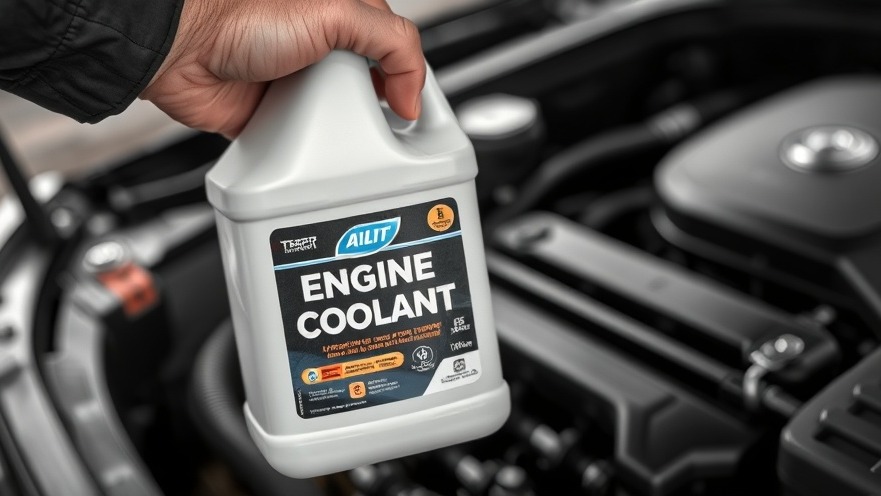
Keep Your Engine Running Smoothly: The Importance of Preventive Maintenance
If you've ever experienced steam pouring out from under your car hood, you know the panic that sets in. An overheating engine can spell disaster for your vehicle, leading to costly repairs or even complete engine failure. For example, did you know that replacing a blown V8 engine can cost as much as $7,000? But all hope is not lost! Recognizing the early signs of engine trouble can save both your car and your wallet.
In 'This Trick Will Make Your Engine Run Like New', the discussion dives into critical engine care and overheating prevention, exploring key insights that sparked deeper analysis on our end.
Understanding Engine Overheating: Root Causes
One of the biggest culprits behind engine overheating lies within the cooling system. Let's break down the key factors that could contribute to this issue:
Coolant Problems: Coolant keeps your engine at a safe temperature. Low coolant levels or incorrect mixtures can hinder its effectiveness.
Faulty Thermostat: If the thermostat fails, coolant might not flow properly, resulting in your engine overheating.
Damaged Radiator: A broken or clogged radiator cannot cool the hot coolant, leading to high temperatures.
Worn Serpentine Belt: This vital belt powers the water pump; a failure here stops coolant circulation.
Malfunctioning Water Pump: A damaged pump will restrict coolant flow, which is crucial to maintain proper engine temperature.
Clogged Hoses: Dirt and debris can block coolant hoses, while cracks can lead to leaks.
Blown Head Gasket: If this crucial seal fails, coolant can leak into the engine, causing significant overheating.
Low Oil Level: Oil is not just for lubrication—it helps cool the engine. A low oil level can contribute to overheating.
Signs Your Engine is Overheating
Keeping an eye out for telltale indicators can help save your engine:
Temperature Gauge Warning: Watch for warnings on your temperature gauge or thermostat light.
Burning Smell: A strong odor of burning plastic or rubber could indicate your engine is overheating.
Strange Noises: Listen for any odd sounds—such as ticking or thumping—which could suggest issues.
Coolant Leaks: Puddles of brightly colored liquid could signal a coolant leak.
Steam From the Hood: If steam is pouring out from under the hood, your engine is in serious trouble.
Sluggish Acceleration: Less power when pressing the gas may indicate engine stress.
Hood Temperature: If the hood is too hot to touch, your engine might be overheating.
What to Do If Your Car Overheats
In case of overheating, follow these crucial steps to minimize damage:
Pull over safely and turn on your hazard lights.
Turn off the engine immediately to prevent further damage.
Exit the vehicle and stand clear of traffic.
Call for roadside assistance to avoid risking burns from hot coolant.
Preventive Measures to Maintain Engine Health
Preventing overheating is often easier than dealing with it once it happens. Here are some actionable tips:
Regularly Check Fluid Levels: Keep your coolant and other fluids at recommended levels to ensure proper function.
Watch Temperature Gauges: Adapt driving habits during hot weather, such as turning off the AC.
Maintain Regular Services: Follow your vehicle’s maintenance schedule to catch issues before they escalate.
Avoid Hard Driving: Drive gently, especially during hot weather or stop-and-go traffic to reduce engine strain.
Monitor Performance: Address any signs of sluggish performance right away.
Investing a little care and attention into your engine can keep it running strong and reliable. By understanding and recognizing early signs of overheating, you can dodge costly repairs and ensure your vehicle stays in tip-top shape.
 Add Row
Add Row  Add
Add 




Write A Comment